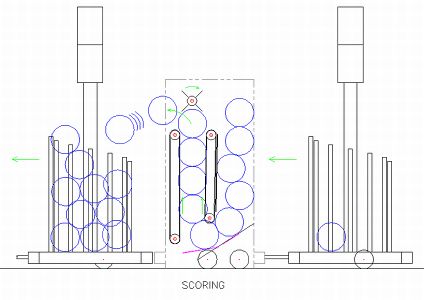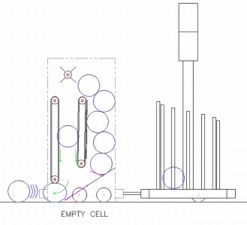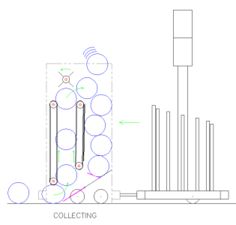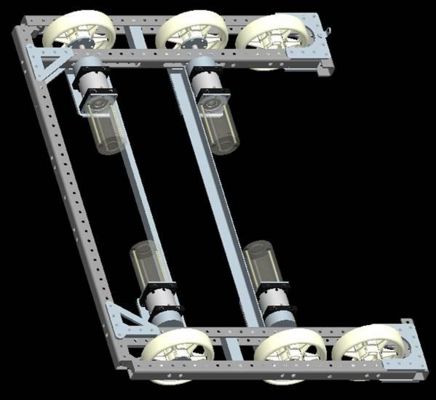2009:Robot Design Details
From 1511Wookiee
Jump to navigationJump to search
Main Robot Design
General layout design of the robot, Dimensions ARE NOT exact.
Drivetrain
- 4-wheel drive
- Banebots Transmissions
- 4 2.5" CIM motors
- Victor 884 [Drive] Speed Controllers
- Fixed wheels (slip-style steering)
- Banebots encoders on each wheel (http://banebots.com/pc/ELECTRONICS/EN-G0561-KT) -- mounted at transmission outputs.
- 27.25” LONG x 37.25” WIDE
- Rear wheel axis at 5.625 from most rear surfaces (adjustable down to 4.625 corner brace regime permitting)
- Front wheel axis at 11.625 from front most surfaces (adjustable ± 2.00”)
- Still need to determine a few hardware items but I think we could use a few PEM fasteners to further minimize fastener system weight
- We will need to design a few spacers “on the fly” as we determine the best approach while building
- The 6-hole patterns in the wheels need to be tapped for 10-32 Depth TBD
- Need to add the stiffener element between the wheels (1/side 1”x1” ext. Al stock is light and will work well and can be welded)
- Need to cut necessary smaller frame elements from stock
- Need to design in provisions for front “dummy wheels” biased 1/8” up for roll over protection
Front Ball Entry/Exit
- Ball intake/expulsion power provided by "chicken pluckers" on front conveyor - see conveyor.
- Passage controlled by "door" (TBD - need details)
- Powered by same motor, speed controller as ball hopper trap door (see below).
- Two Limit Switches to tell when door is in open/closed position
Ball Hopper
- Open top entry for human player introduction
- Entry from conveyor at top of robot; entry controlled by upper ejector
- Exit is a "trap door" at the bottom of the hopper down to the area behind the lower ball collector and at the base of the conveyor system.
- Trap door powered by Nippon Denso Window motor (along with lower collection blocker; possibly a rack & pinion arrangement?)
- Two Limit Switches to tell when door is in open/closed position
- Two Q10RP6R Recievers and Q106E Sources mounted at the top to determine when the hopper is full
- Jaguar speed controller
Ball Conveyor
- Two conveyors opposite each other, working together to move balls from ball intake and/or below the ball hopper up to the upper ball ejector/hopper entry point.
- Front conveyor also acts as collector to bring outside balls in via "chicken pluckers" on lower roller of conveyor
- Powered by two independent motors (RS-545 Banebots motors with 25:1 reduction gearboxes)
- Likely NOT direct drive, will likey be chain/sprocket to save space and move weight back on robot
- Banner Sensors (photoelectric): Q10RP6R Reciever and Q106E Source Mounted at the top of conveyor to detect ball "ready to fire"
- 2 Omron photoelectric sensors arranged with a small wheel used to determine conveyor speed. One disk/sensor per conveyor.
- Jaguar speed controller
Upper Ball Ejector
- Spinning ejector directs, based on direction, balls out of robot or in to hopper entry point.
- Powered by Fischer Price 00968-2910 motor with plastic gearbox removed and TBD Transmission to be added
- Likely NOT direct drive, will be chain/sprocket to save space and move weight back on robot
- Shaft encoder sensor (E7P-180-375-S-H-G-3) to monitor rotational speed (180 CPR). Requires 3/8" shaft.
- Jaguar speed controller



